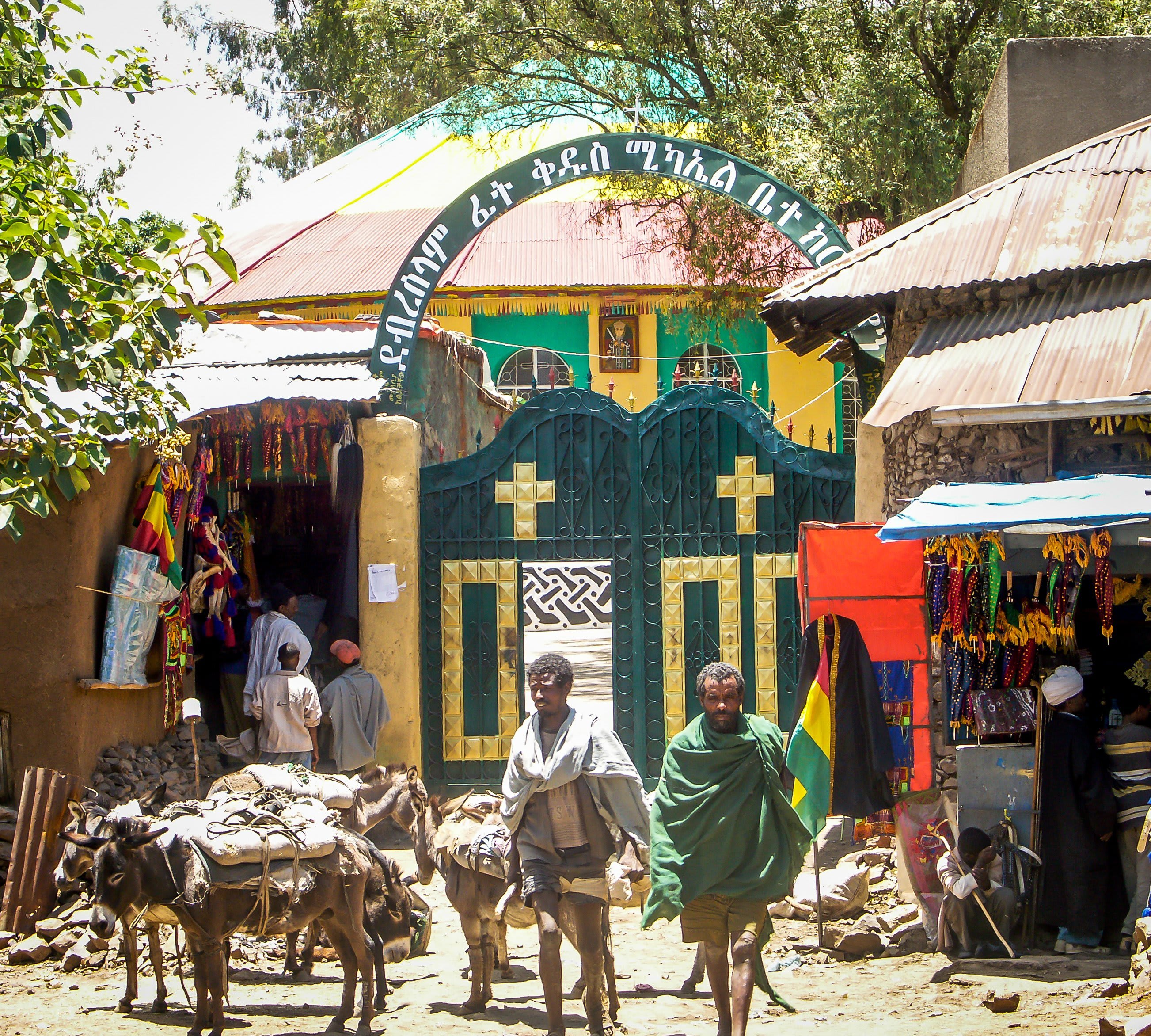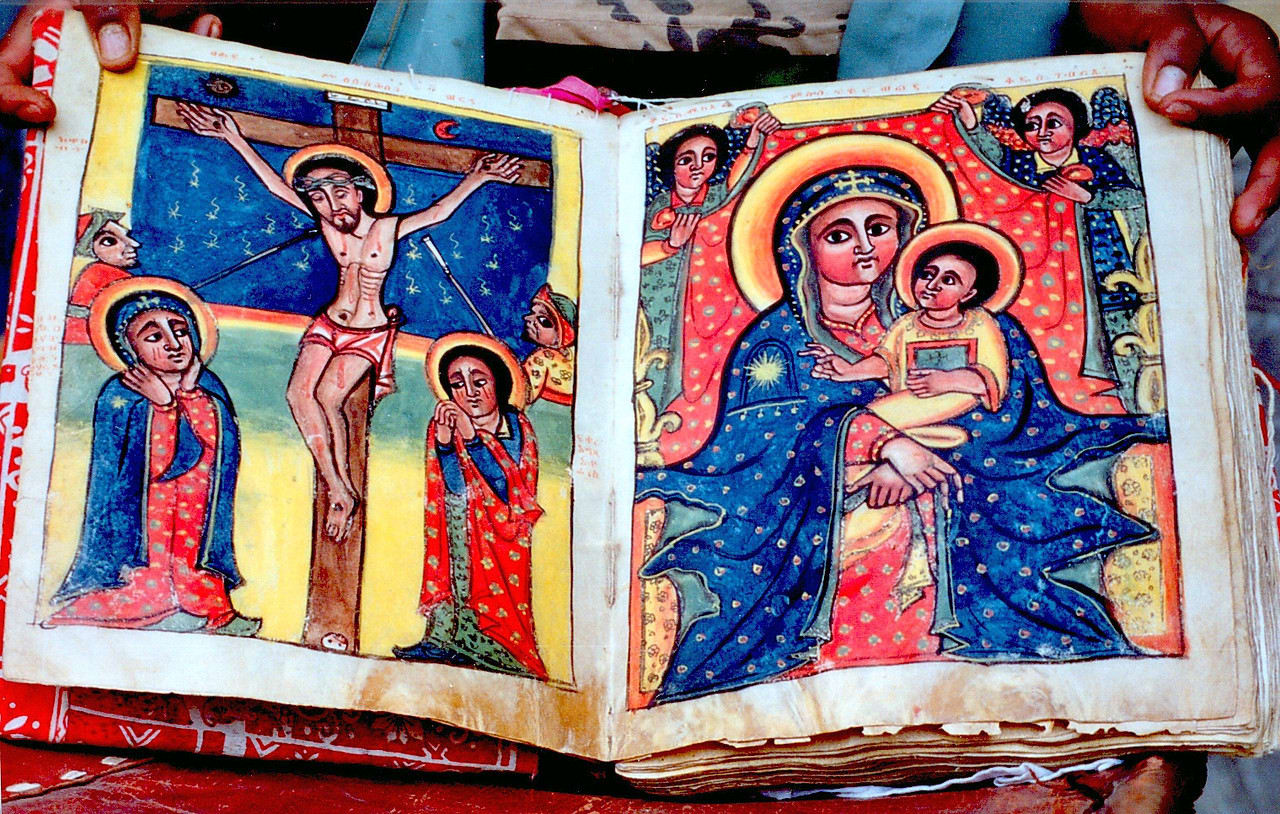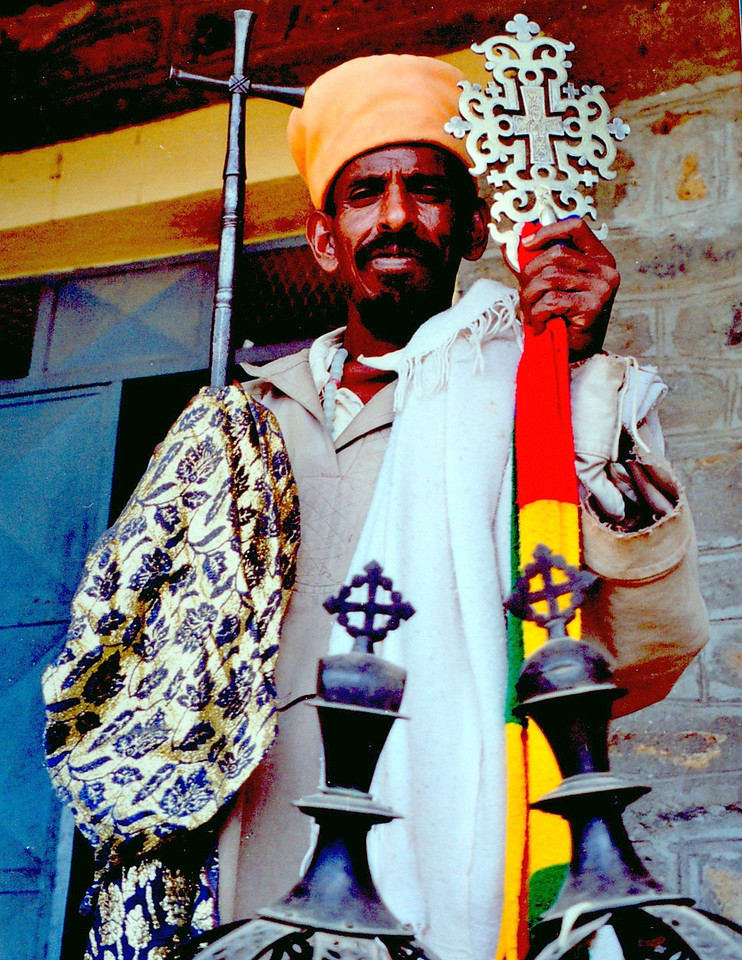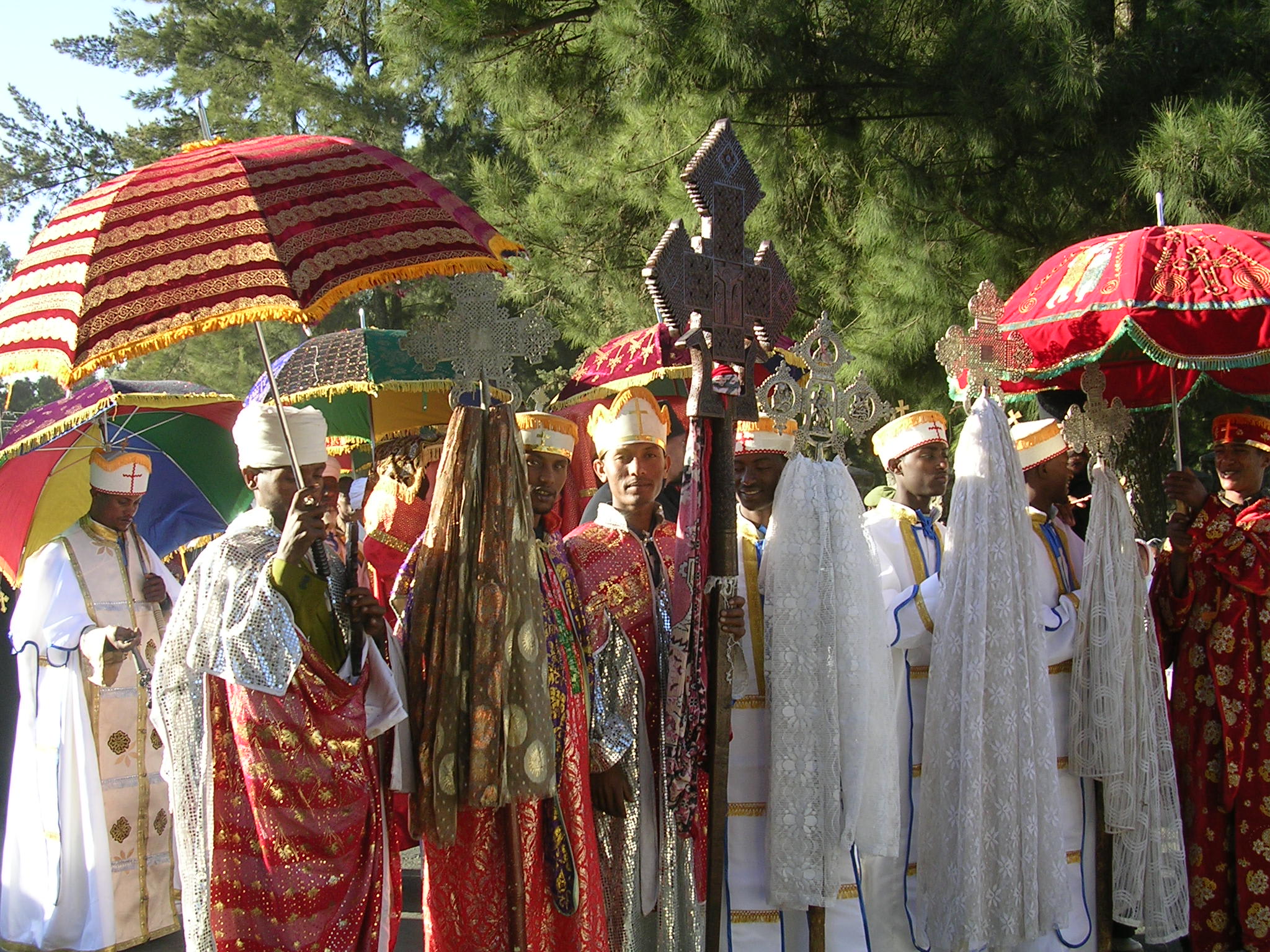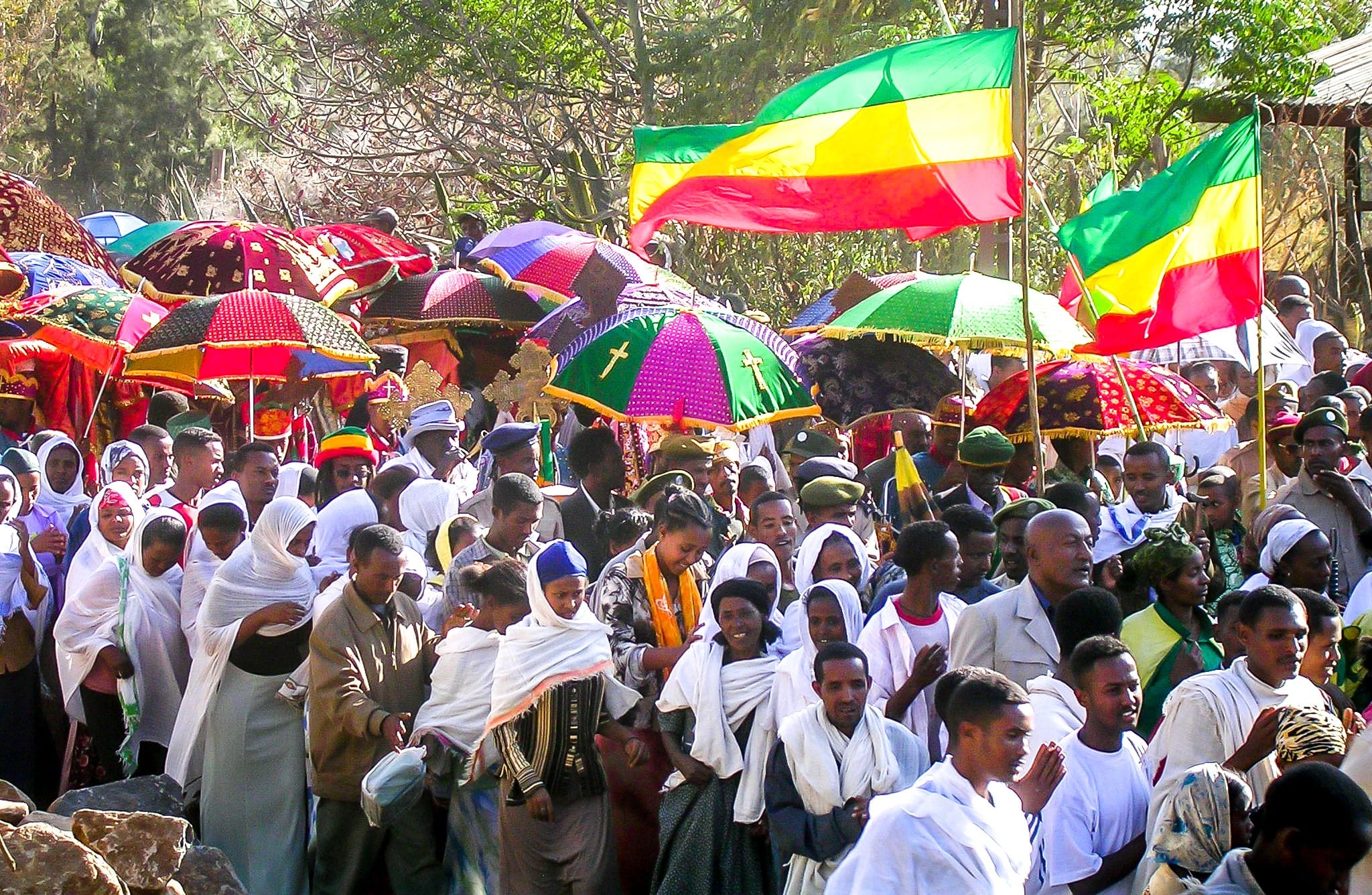Religion is instrumental to everyday life in Ethiopia, as it has been for centuries. Priests and deacons abound in their often colourful robes, carrying their staffs and ornate crosses that people frequently kiss as they pass. Ethiopian languages are full of references to God, and the calendar’s days of interest are determined largely by religion.
On the central plateau, the Ethiopian Orthodox church holds sway, as it has done since the 4th century when Ethiopia became the first state to adopt Christianity. The Orthodox Church has many connections with ancient Judaism. Fasting and detailed food restrictions, the specific ways of slaughtering animals, the layout of the churches and the practice of circumcision all make for a very particular religious culture.

